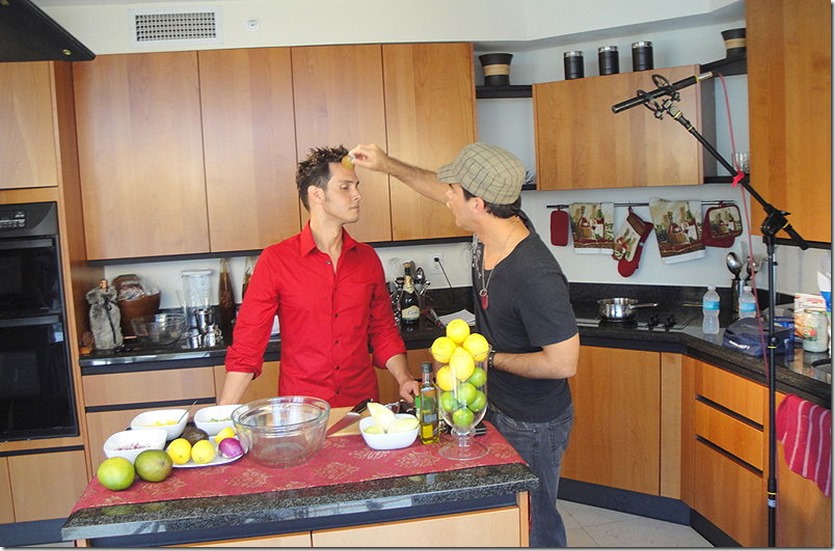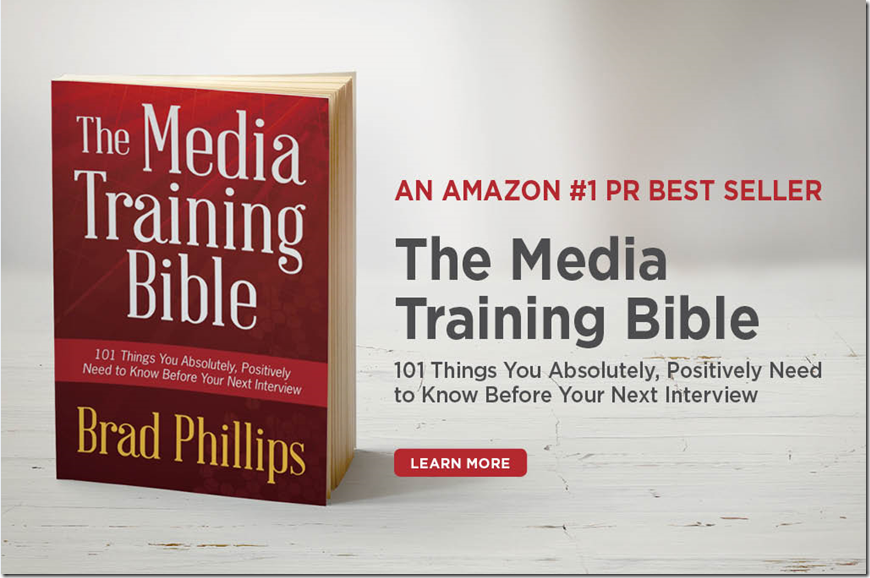Five Ways To Rock A Television Cooking Demo
Remember that old game of coordination in which you had to try to rub your belly and pat your head at the same time? Television cooking demos can often feel similar—but with the addition of hot flames, sharp knives, and unpredictable hosts.
We’ve worked with dozens of chefs (and “mixologists”) through the years and have observed that on-air cooking demos, which often last only two or three minutes, deserve a place on any list of challenging media formats. In this post, you’ll find five tips to help your next appearance run smoothly.

1. Remember That Television Demos Aren’t Primarily About Cooking
In a restaurant kitchen, you can spend hours preparing your mise en place, cooking your entrée, and plating it perfectly. During a live cooking demo at an event in front of an audience, you have less time—perhaps 20 minutes—but still enough to complete a dish.
But television requires a mind shift. In a three-minute segment, it’s nearly impossible to interact with the host, offer detailed step-by-step cooking instructions, and articulate a message about your restaurant, resort, or catering company.
It’s usually best to think of the high-level points you want to make during your demo. You may be able to briefly mention the name of each ingredient, but you’ll run out of time if you try to offer detailed information. Instead of directing your full attention to the food, remember that being on television means you’re in the front of the house now—so you’ll need to direct some of your energy to the host.
Yes, demos are partially about cooking. But they’re also gateways to you and your brand. If you’re cooking something that looks delicious while coming across as likeable, viewers will be more inclined to seek out your restaurant. Lull them with the combination of food and personality; you can always invite viewers who are interested in the complete recipe to visit your website.
2. Break Your Demo Into Steps
It’s easier to remember what you’d like to say if you divide your demo into the smallest number of steps possible in advance. For example, you might divide it as follows:
STEP ONE
Food: Olive oil, onion, garlic, aromatics
Message: This is a great weeknight dish the entire family can enjoy.STEP TWO
Food: White wine, chicken breast dredged in flour, salt and pepper
Message: We cook with locally produced food at our restaurant, such as this organic chicken, which comes from nearby Johnston’s Farm.STEP THREE
Food: Couscous, shallots, golden raisins, slivered pecans
Message: This chicken pairs nicely with any grain, but I prefer couscous because it soaks up the juices nicely.STEP FOUR
Food: Top chicken with fresh parsley, squeeze of lemon, lemon zest, shaved parmesan
Message: You can find this recipe and many other easy weeknight meals at our website at [website address].STEP FIVE
Food: Plate meal, offer host a bite
Message: We hope to see you at our restaurant soon!
3. Start Cooking Ahead Of Time
Ideally, you’ll know what time your cooking demo will air, so you can often begin cooking before that time comes. In the example above, there’s no reason to eat up time during the demo by sweating onions. Use your time wisely! Start sweating them 10 minutes before the on-air demo begins—and when the segment starts, you can say:
“I’m cooking a great weeknight dinner today that your viewers can put together in less than an hour. We started by sweating onions on a low heat with garlic, salt, pepper, marjoram and parsley in olive oil. Now, we’re going to add some white wine…”
4. Always Prepare a Finished Plate
There’s little more discouraging than running out of time before you’ve completed your dish. But it happens—a lot. Prepare a finished plate—sometimes called a “beauty plate”—in advance. If you run out of time, you can pull out the completed dish, show it to the audience, and offer your host a bite.
5. Expect The Unexpected
Anyone going on live television needs to be prepared for the unexpected. But anyone doing a live demo should expect it. Your segment may get cut from four minutes to two at the last moment. The host may take the conversation in an unexpected direction. The host may talk too much, leaving you little room to get a word in, or too little, forcing you to deliver the demo on your own. And, worst of all, the host may criticize your food after tasting it (“that’s too salty for me!”). Think through the possibilities in advance, and don’t be so committed to your game plan that you can’t roll with the changes.
Like the blog? Read the book! The Media Training Bible: 101 Things You Absolutely, Positively Need to Know Before Your Next Interview is available in paperback, for Kindle, and iPad.



